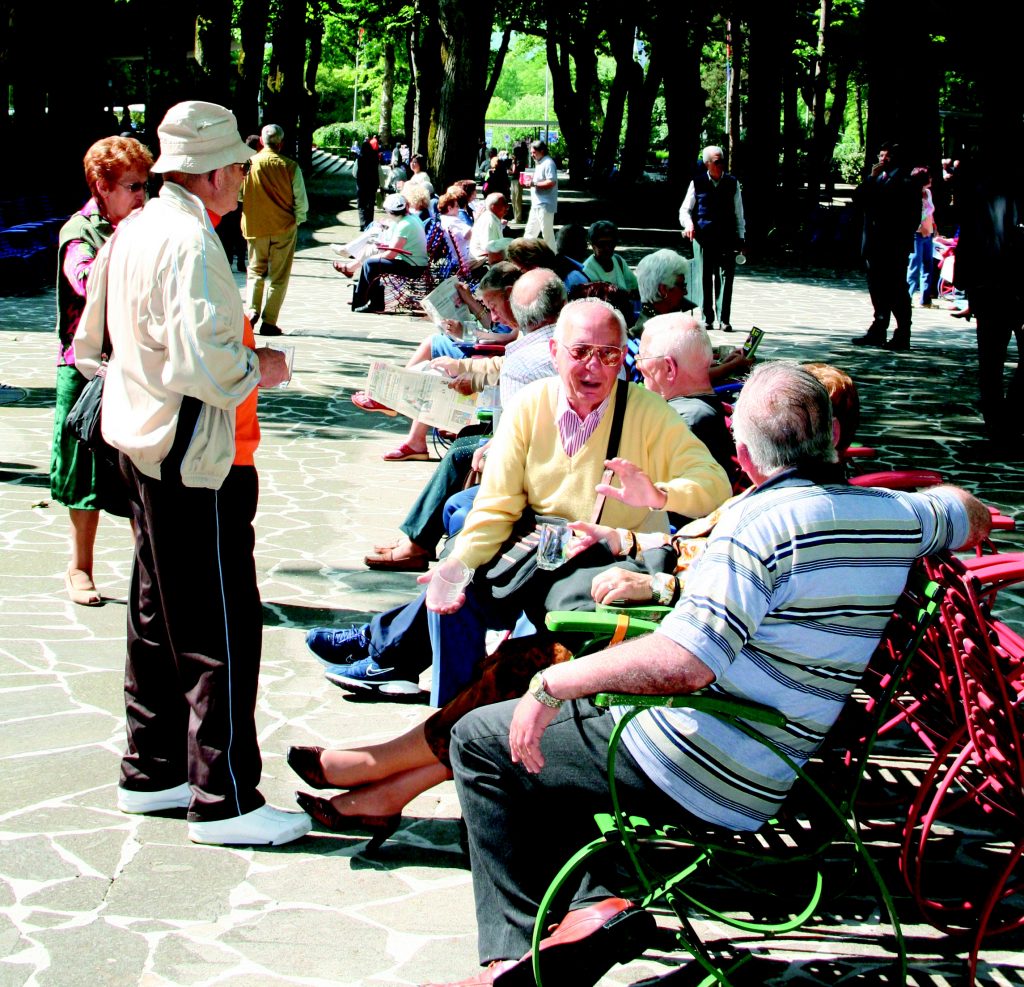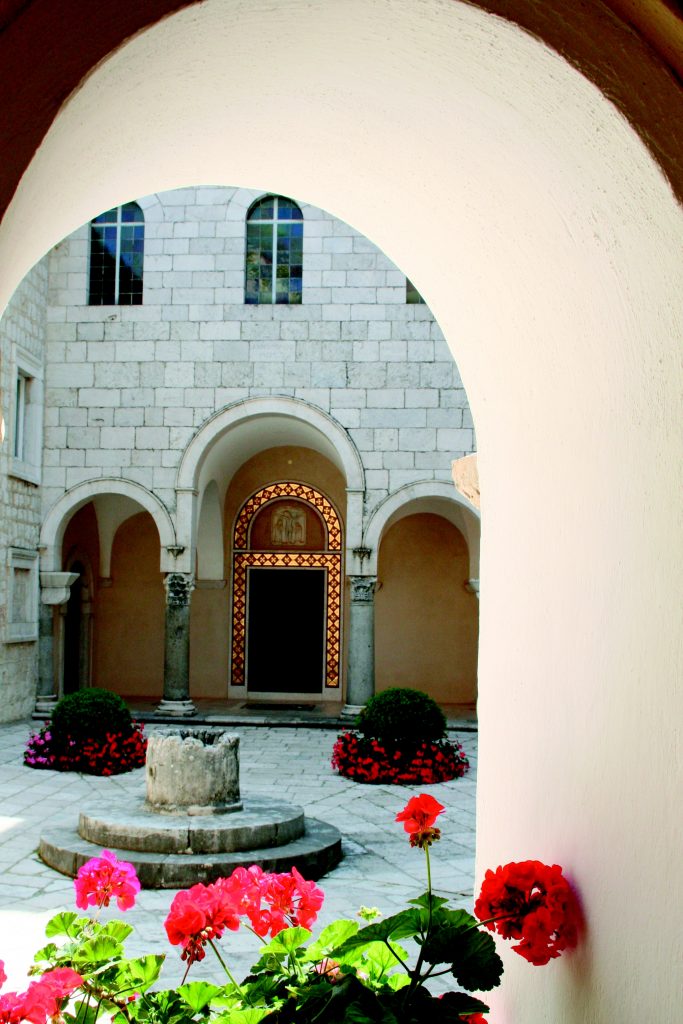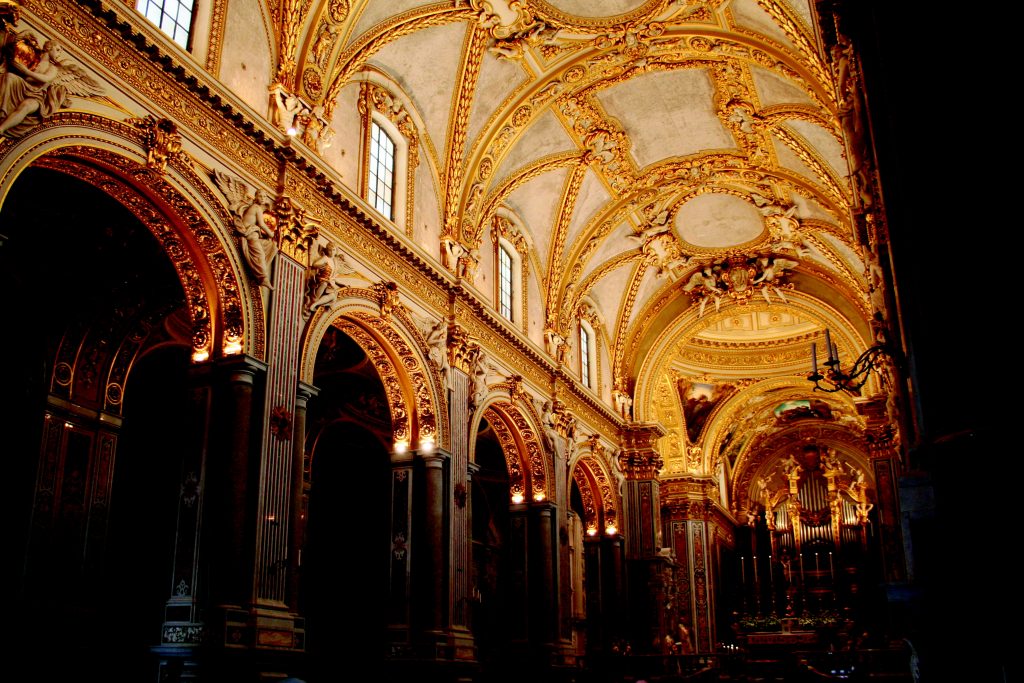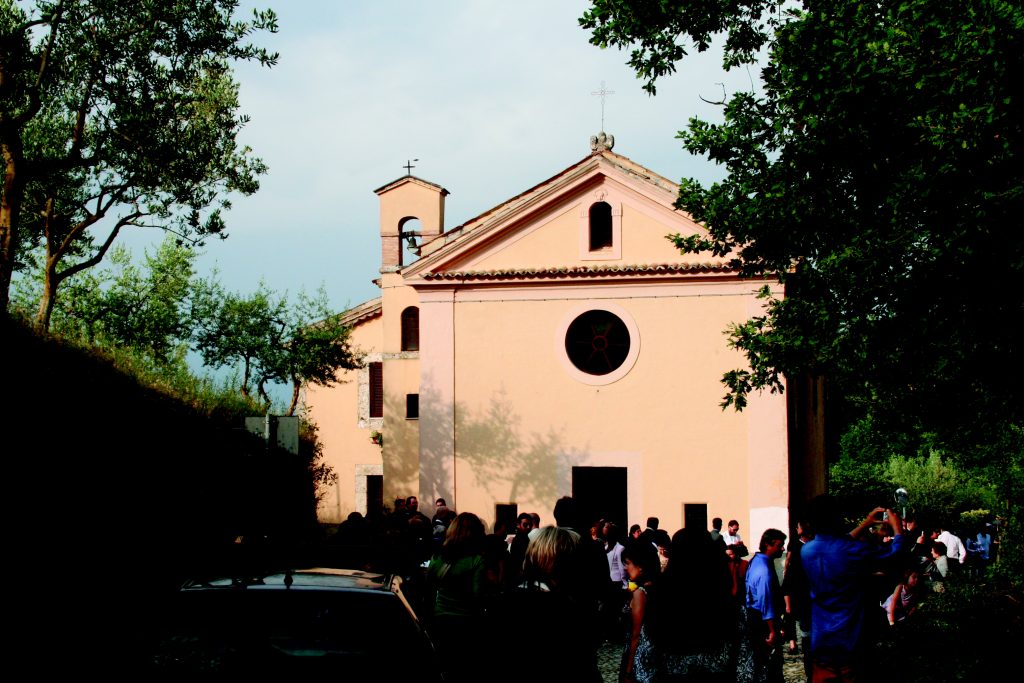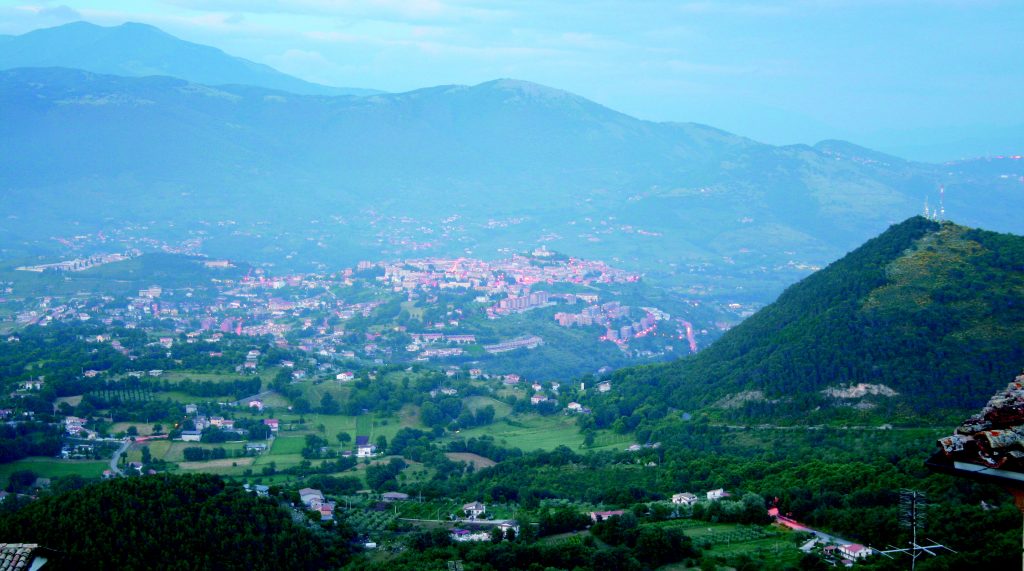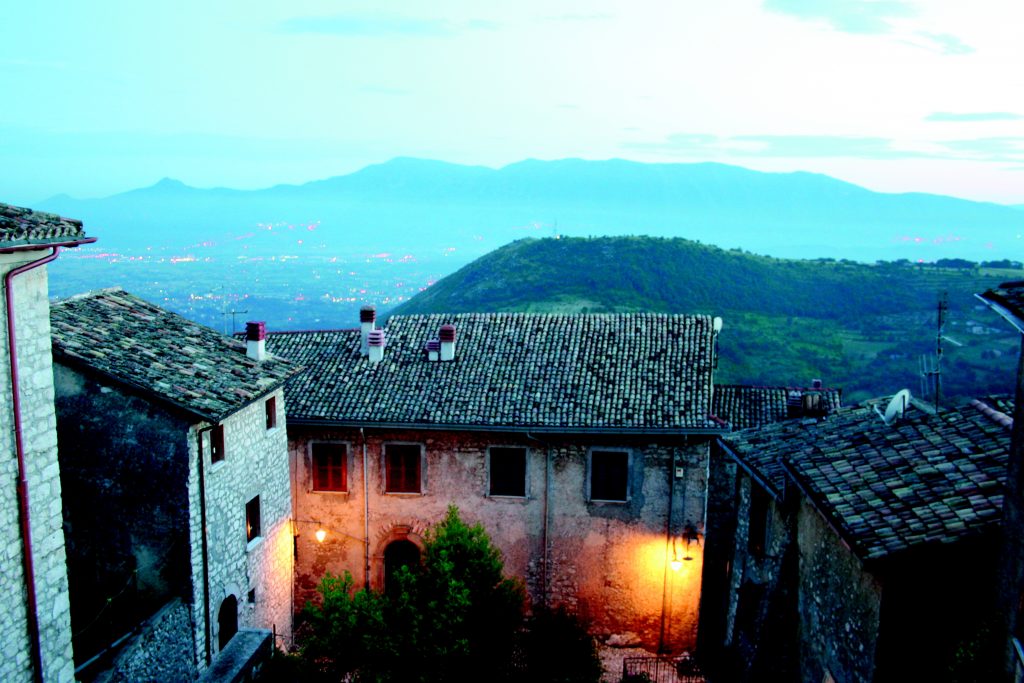A few dozen miles from Rome, but a world away from the hot, hectic capital, Ciociaria’s awesome landscape is peppered with fascinating towns. Fleur Kinson has her eyes opened to a secret part of central Italy
Elderly Italians sit around me, reading and sipping from glass mugs. I’m sitting in the sunshine, contentedly, and take another sip from my mug, savouring the warm, mineral-smelling water. Is it doing me any good? I can’t say. Devotees included Michelangelo, who swore it cured his gallstones. Kings of Italy came here to sup it, and doctors insist it lowers blood pressure. Still in my thirties, I’m not yet worried about gallstones or blood pressure, but I am feeling a growing sense of wellbeing as I rest in the sun, drinking my tepid springwater and looking forward to a massage at one of the plush local spas.
I’m in Fiuggi, in southern Lazio, on a mission to get to grips with one of Italy’s few remaining ‘undiscovered’ areas: Ciociaria (pronounced Cho-cha-REE-a). No, I hadn’t heard of it either, until recently. Beginning just 30 miles east of Rome, and spreading southeast for 50 miles with its back against Abruzzo, Ciociaria is a land of green hills, fertile valleys and high, forested mountains. Clean and unspoilt, with huge vistas around every bend in the road, it nonetheless has thriving small towns and an enterprising population. It wasn’t always the case.
Less than a hundred years ago, Ciociaria was a byword for economic migration, with the locals leaving in droves. But now the young people of Ciociaria are staying put, creating small businesses, encouraging tourism, bringing local wine and foodstuffs up to gourmet standards. Meanwhile, the previous generations who went abroad to make their fortunes have come back to retire. There are few tumbledown homes in the vast landscape and little that is unkempt. Mercifully underdeveloped, but not impoverished, Ciociaria now enjoys the best of both worlds.
Geographically, Ciociaria resembles Umbria, and is green and wooded – olive trees bristling across grassy hillsides, dark conifers and shaggy deciduous trees cloaking the mountains. With its fresh, relatively cool summer air, Ciociaria has long offered stressed workers from Rome a respite from the capital’s heat, but to visitors from beyond Italy, the area is almost entirely unknown. Only two places in Ciociaria have ever seen significant numbers of foreign visitors – Fiuggi, whose mineral-rich waters put it firmly on Europe’s fin-de-siècle spa trail, and Montecassino, with its hilltop monastery, a regular sightseeing stop for young gentlemen who used to do the Grand Tour.
ROAD TRIP
I decided to see what lay between these two relatively well-known places, at either end of Ciociaria, and spend three days meandering from Fiuggi in the north (40 miles away from Rome) down to Montecassino in the south (50 miles away from Naples), to fully get to grips with unknown Ciociaria.
And so I leave the contented streets of Fiuggi and drive ten miles south to Ferentino, a little town perched on a tall knoll overlooking a valley. People have lived here for 3,000 years, and it’s a lesson in history just looking up at the high walls that gird the town. Giant, irregularly-shaped Cyclopean blocks from the 8th century BC climb upwards to meet smaller blocks from the 1st century BC – some with Roman inscriptions. On top of these are later stones and medieval townhouses sprouting flush from the edge of cliff-like walls.
I wander the quiet streets, noting an old Roman marketplace in a neat cave, and a medieval townhouse with a scavenged Roman lintel above its doorway. A sudden shower of rain sends me under a different doorway – the huge, slow-falling drops unlike the quick, needle-rain of Britain. Mountainous Ciociaria often experiences unsettled weather, and these downpours help keep it so green. As quickly as it began, the shower stops and I stroll back to the car.
I drive eight miles northwest to Anagni and find the sun again. But the real illumination in this little town lies indoors, in the cathedral’s Crypt of San Magno, dubbed the ‘Sistine Chapel of the Middle Ages’. Every inch of wall and vaulted ceiling is covered in Byzantine-style frescoes from the 12th and 13th centuries. Biblical stories are depicted and the swirling Cosmati pavement underfoot means you hardly know where to look.
Back in the sun, I admire the cathedral’s elegant asymmetric exterior and stroll among the cheerful locals to inspect Anagni’s other notable buildings. Again, Ciociaria puts me in mind of Umbria – the pale cobbled lanes, the delicate churches built in whitish-grey stone, the immense vistas of landscape from public ‘belvedere’ terraces. It’s an impression that’s only reinforced when I carry on to little Fumone a few miles away.
A clutch of quiet lanes built around a castle, with mighty views to Abruzzo, Fumone makes me think of a more rustic version of Montefalco – the tiny Umbrian town with the big vistas.
The next day I drive up through steep mountainscapes to the impressive Charterhouse of Tresulti – a secluded 13th-century monastery. Ironically, for a place that would traditionally have banned women, there’s a wedding here when I arrive. Young Italian ladies totter around, while the monks glare at me in my scandalous shorts. I quietly explore the fine church with its ornate altar and Baroque frescoed ceiling, then the intriguing ‘pharmacy’ where monks used to blend herbal remedies, and the lovely garden festooned with topiary shaped like coils of whipped cream.
The British heartland
I travel onward to the near-centre of Ciociaria, Veroli – a charming hilltown full of dogs basking in sunny piazzas and happy Verolesi sitting at café tables. A couple of churches and a historic Roman calendar set in stone are worth a look, but for me the best of Veroli lies in its tidy domestic lanes, its little public squares, and its phenomenal views across the green and fertile landscape below. This is definitely a place one could live in, and it doesn’t surprise me to learn that the British have already started trickling in. A handful of foreigners – all English – have bought homes in or near Veroli in the last few years.
From Veroli I drive 14 miles east to Cicero’s childhood home, Arpino, now a handsome medieval town pitched on a ridge in the landscape. As in so many once-Roman settlements, Arpino’s modern central piazza stands precisely where the ancient forum stood 2,000 years ago, and the town’s main church sits where the main pagan temple used to be. I admire the doughty, fruit-coloured buildings climbing up from the piazza, and then drive up to the ancient apex of the town – the acropolis.
Taking the form of a grassy hilltop meadow, strewn with crumbling bits of fortification, Arpino’s acropolis reveals there was life here long before the Romans. Cyclopean or ‘polygonal’ walls, and an unusual Mycenae-style pointed-arch gateway attest to ancient peoples dwelling here for hundreds of years before the Roman arrived.
From this vantage point of history, the view is breathtaking, little Arpino unfurling its maze of terra cotta rooftops on the olive-skirted ridge below, and all of Ciociaria’s wild green landscape spreading beyond it.
The next day I head further south, which is, if anything, wilder and more remote than the north. I drive into the Camino Valley – all soft green undulations and tiny villages. I pick one at random, Picinisco, and find a well-kept hamlet with white cobbled lanes and a friendly central terrace offering wonderful views. Elegant villas on the outskirts reveal that many locals went away to make their fortune before coming home.
I meet a sprightly 85-year-old local man who worked as an haute-couture dressmaker in London for 40 years, and hear that many others in the village used to work in Scotland. I smile to think of the ongoing love affair between the British and the Italians – the mutual fascination that draws us to their homeland and them to ours. In the wilds near Picinisco, DH Lawrence had spent a winter writing a lesser-known novel, The Lost Girl. He especially sought out a remote nowhere-land to inspire him. I go along to visit the snug house he had stayed in, now a museum.
Outside, a trio of musicians in folk costume are playing on strange instruments. The sound veers in style from Baltic to Alpine, and I’m hooked. Equally mesmerising are the trio’s footwear – bizarre leather sandals with pointy, curled-up toe-tips and miles of leather straps wrapped
tightly round the ankles. They are the traditional footwear of the area, called ciocie, and they gave Ciociaria its name. To the Romans who christened it, this was ‘The Land of the Strange Sandals’. Having seen the sandals, and therefore somehow touched the very heart of Ciociaria, I feel my journey of discovery is nearly over. There’s only one place left to go – 15 miles south to Montecassino.
The end of the road
And I can see why the Grand Tourists had to stop here. A huge white slab of architecture consuming a high hilltop overlooking a wide valley – how could you miss it? Unfortunately, the monastery’s conspicuous size and significance has often been its downfall. Enemies of Christianity,
or of Italy, plus one mighty earthquake, have variously destroyed the place no fewer than five times over the last 15 centuries.
Completely rebuilt now, it’s an inspiring place to wander and to gaze out across the enormous Ciociarian landscape. Pointing my eyes in the general direction of Fiuggi, I take a deep breath of fresh mountain air and consider what an enlightening few days I’ve had exploring this beguiling and little-known stretch of Italy.

